#1860s gown
Text
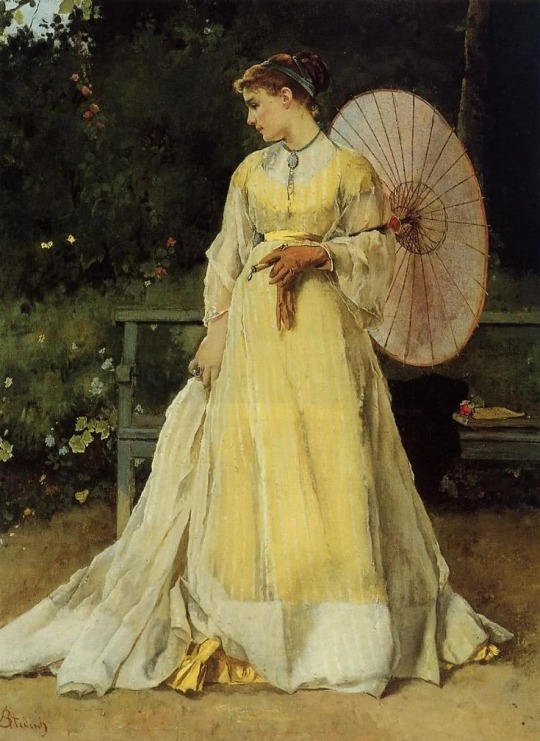
In the Country, Alfred Stevens. 1867.
#aesthetic#art#art history#victorian#victorian aesthetic#fashion#historical fashion#historical art#women in art#1860s gown#1860s fashion#1860s#1860s dress#yellow dress#yellow#yellow aesthetic#Victorian era#fashion history#history#women#women’s fashion#1860s art
1K notes
·
View notes
Text

They’re going to go hook up in the bathroom in approximately 20 minutes
#1860s fashion#1860s#bubbline fanart#bubbline#princess bubblegum#marceline the vampire queen#marceline#evening gown#victorian fashion#victorian au#adventure time fanart#adeventure time
1K notes
·
View notes
Text
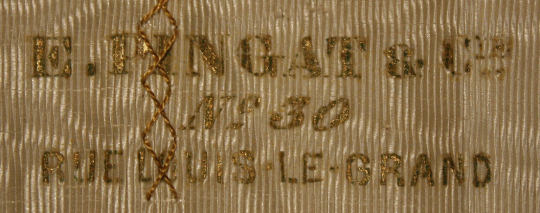
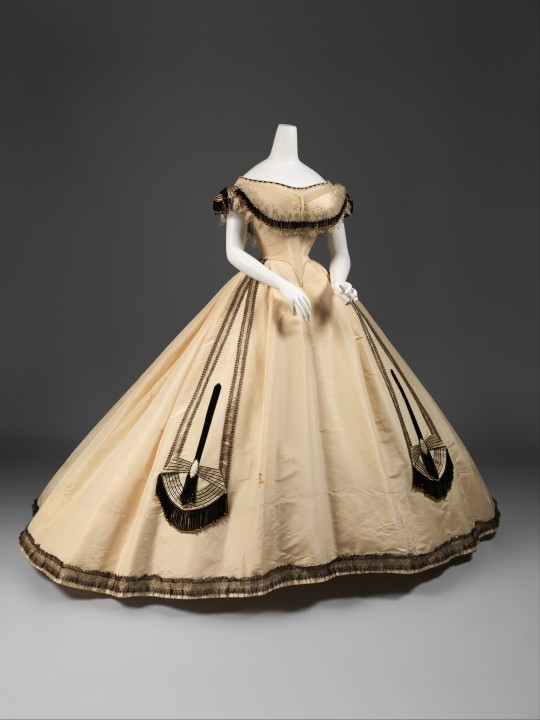
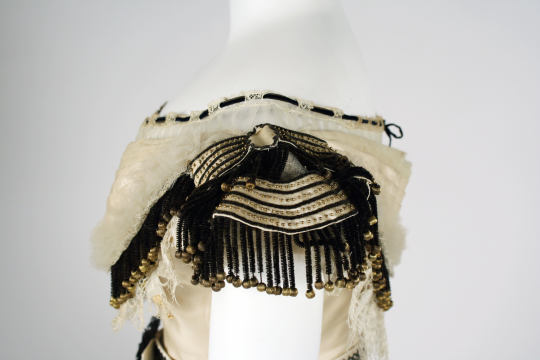

Ball Gown
Emile Pingat (Paris, France)
c.1864
The MET (Accession Number:C.I.69.33.12a–c)
#ball gown#evening dress#1860s#fashion history#historical fashion#emile pingat#pingat#1864#white#black#silk#19th century#second french empire#france#crinoline era#up close#the met
908 notes
·
View notes
Text
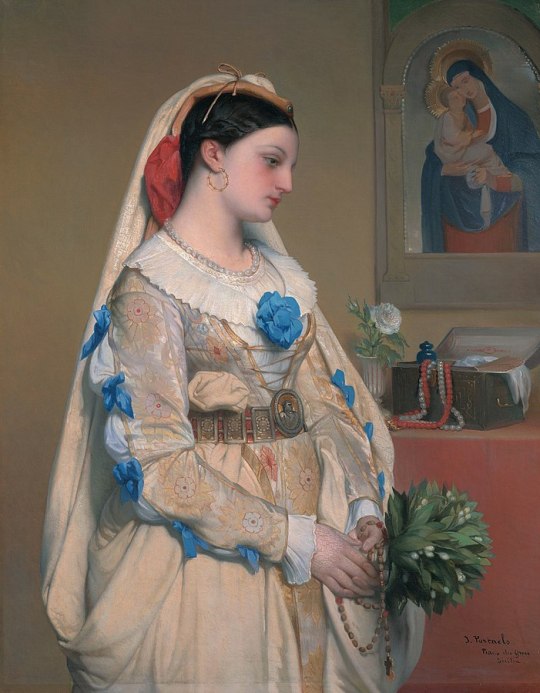
Jean-François Portaels (1818-1895)
"A Sicilian Bride" (1861)
Oil on canvas
#paintings#art#artwork#genre painting#female portrait#jean françois portaels#jean francois portaels#oil on canvas#fine art#belgian artist#portrait of a woman#sicilian#bride#wedding#wedding dress#wedding gown#clothing#clothes#side profile#1860s#mid 1800s#mid 19th century#1k
1K notes
·
View notes
Text
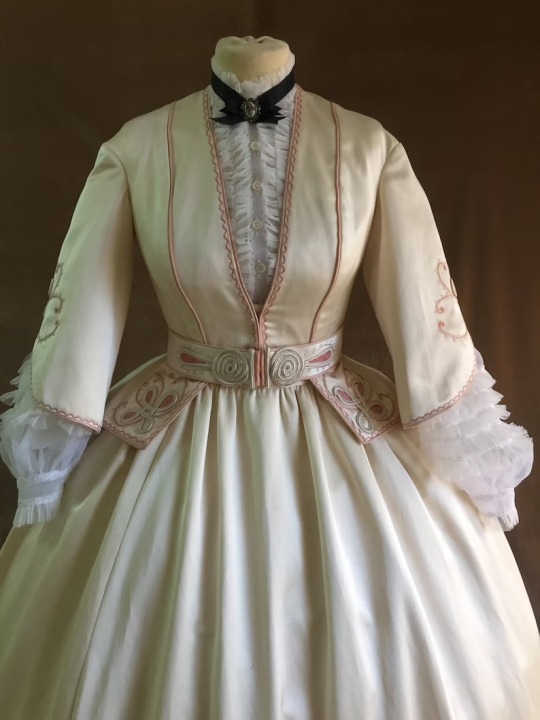
#1860s art#circa 1860#1860s fashion#1860s#1860s dress#fashion dress#victorian clothing#victorian history#victorian dress#victorian era#mid 19th century#19th century#19th century fashion#fashion#long dress#gown#historical fashion#historical dress#historical clothing#history#historical#victorian#textiles#textile#dresses#dress#clothing#artwork#etsyseller#etsy
190 notes
·
View notes
Text

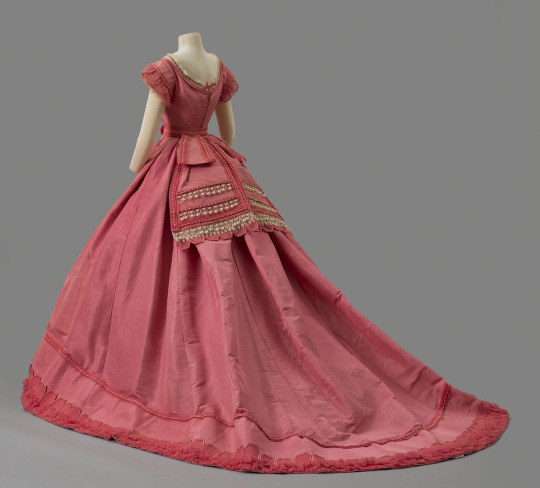
Pink silk ball gown, ca. 1867, French.
By Emile Pingat.
Albany Institute of History & Art.
#womenswear#extant garments#dress#silk#19th century#french#albany institute#1867#1860s#1860s dress#1860s extant garment#1860s France#Emile pingat#pink#ball gown#evening#1860s evening#1860s ball gown
229 notes
·
View notes
Text
How often do we think nations get drunk and wonder around the streets of their modern city's wearing their museum quality historical clothing that they found in their attic
#yes I did this this thought from a tiktok of a girl wearing a perfect 1860s replica gown dancing down the street on Halloween#hetalia#hws america#hws england#hws france#hws canada#hws germany#hws prussia#hws russia#hws china#historical hetalia#hetalia headcanons#hws#aph
172 notes
·
View notes
Text
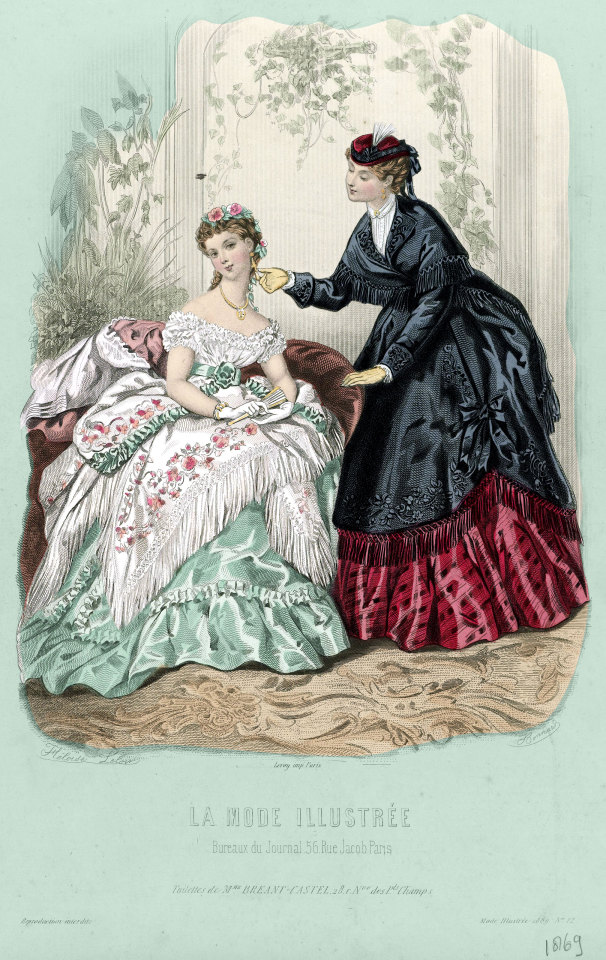
La Mode illustrée, no. 12, 21 mars 1869, Paris. Toilettes de Mme Bréant-Castel, 28. r. Nve. des Pts Champs. Collection of the Rijksmuseum, Netherlands
Robe de dessous en faye vert lumière. Le bord inférieur est garni d'un volant ayant 25 centimètres de hauteur, surmonté d'une ruche chicorée; sur chaque côté cette ruche se sépare, forme un angle droit et remonte jusqu'à la ceinture, de façon à simuler une seconde robe, tandis que le volant représente la robe dessous. Tunique faite avec un crêpe de chine blanc, brodé de fleurs de couleur; la frange du châle sert de garniture à la tunique. Celle-ci est relevée à l'aide de ruches en faye verte de façon à former un très-large pouff par derrière. Ceinture verte se fermant sous un chou assorti. Corsage décolleté en faye vert, recouvert de gaze blanche, et bordé ainsi que les manches courtes de ruches en dentelle. Coiffure de roses thé et roses.
Robe de dessous en pékin rouge à raies satinées, garnie d'un volant coupé en biais ayant 40 centimètres de hauteur. Robe de dessus en cachemire noir brodé, garnie d'une frange noire. Mantelet pareil à la robe, croisé par devant et à revers, fixé par derrière de façon que les pans forment une sorte de tournure assez volumineuse. Le corsage, ouvert, est en cachemire noir. Les manches sont à revers brodés comme ceux du mantelet.
—
Underdress in light green faye. The lower edge is trimmed with a ruffle 25 centimeters high, topped with a chicory ruffle; on each side this ruffle separates, forms a right angle and goes up to the belt, so as to simulate a second dress, while the ruffle represents the dress underneath. Tunic made with white crepe de chine, embroidered with colored flowers; the fringe of the shawl serves as trim for the tunic. This is raised using green faye ruching so as to form a very large pouff from behind. Green belt closing under a matching collar. Low-cut bodice in green faye, covered with white gauze, and edged as well as the short sleeves with lace ruffles. Tea rose and rose hairstyle.
Underdress in red pekin with satin stripes, trimmed with a bias-cut ruffle measuring 40 centimeters in height. Top dress in embroidered black cashmere, trimmed with black fringe. Mantle similar to the dress, crossed at the front and at the cuff, fixed at the back so that the sides form a sort of rather voluminous turn. The open bodice is in black cashmere. The sleeves have embroidered cuffs like those of the mantlet.
#La Mode illustrée#19th century#1860s#1869#on this day#March 21#periodical#fashion#fashion plate#color#description#rijksmuseum#dress#evening#gown#Modèles de chez#Madame Bréant-Castel
97 notes
·
View notes
Text

1830s ferengi are my new artblock unstopper. as IF the ladies would let ferengi males take over the trade of millinery and fashionable accessories!
I like to believe that lady ferengis comprise a class of competent and sometimes ruthless merchants and milliners, as well as very discerning consumers of finished products. fashionable suppliers in all quadrants brag about the quantity and loyalty of their ferengi customers (since they'll ruthlessly drop anyone they think is offering subpar goods.) ferengi fashion isn't particularly popular outside ferengar, but if you need any kind of trim, fabric or tchotchke, it's best to get a ferengi female's advice. They know all the best deals, but they may charge a finder's fee.
as for tailors? oh, the best come from cardassia. if you only know the planet for its monocultural militarism and you're surprised to hear it, you clearly haven't seen a gul in full uniform! their structured bodices (don't call them that to their faces - they're breastplates) are architectural masterpieces. If a ferengi brings out your best qualities, a cardassian will invent ones that don't exist - boning, interfacing, padding, buckram, lacing, until you're the perfect inverted starfleet insignia shaped model of a modern lizard general, complete with a coquettish flash of neck. They generally work via flat-patterning, lots heavy duty construction and mathematics. of course your cardassian tailor will do their best to drape your bias cut slip, but they may call a hit on you after wrestling with your risian silk charmeuse...
#ds9#ferengi#JUST speculative....#the CW jumpin out#i had so much fun w the first plate i wanted to do another...#but also. a garak#i love the idea of 18th century tailor cardassians vs milliner ferengi#cardassian bodices look so similar to like. 1840-1860 bodices#it took me a couple eps to realize why its so familiar#and the pants are so FUCKING TIGHT#theyre wearing evening gown bodices with pleather leggings its fierce it fucks you go girls
273 notes
·
View notes
Text


Celestial Blue Ball Gown
Date: 1867
Maker: Marie and Josephine Virfolet, New York City
Materials: Silk satin (tulle was replaced c.1980)
#historical fashion#fashion history#19th century fashion#19th century#victorian#victorian fashion#1860s fashion#1860s#ball gown
145 notes
·
View notes
Text

Everyone's getting excited about 1960s ineffable wives but what about 1860s instead
#this was a speedpaint except it took a while longer than those tend to#anyway i did trace the faces and arms/necks from references#so i can't take credit for those looking like that#just wanted to crank this out#symbollism/costume details to note: crowley's skirt details are devil tails#aziraphale has decorative angel wings on his bodice#and a tiara like a halo#colours are taken from their usual costumes#including aziraphale's plaid#which is not historically used as trim so that's not accurate to my knowledge but i wasn't going to draw that much plaid#and it's just an accessory on the og costume so a whole plaid dress felt wrong#crowley's fan is in the i love you position in that old timey secret fan code#it's idk 1866 or something here#crowley gets gloves because they feel appropriate to his casual sluttiness of attire#feels weird to handle books with gloves so az doesn't have any#anyway i love 1860s truly can't beat it for clothing#and idk why they're wearing evening gowns except i just prefer them to day gowns#maybe they're going to the ritz#good omens#ineffable husbands#ineffable wives#ineffible wives#ineffible husbands#aziracrow#anthony j crowley#david tennant#michael sheen#neil gaiman#terry pratchett#drawawyvern
16 notes
·
View notes
Text

Autumn Flowers, Alfred Stevens. 1867.
#aesthetic#art#art history#victorian#victorian aesthetic#fashion#historical fashion#historical art#women in art#1860s#victorian fashion#1860s fashion#historical aesthetic#fashion history#1860s dress#1860s gown#dresses#gowns#Victorian era#women#Victorian women#costume#costuming#historical costuming#1860s art
71 notes
·
View notes
Text

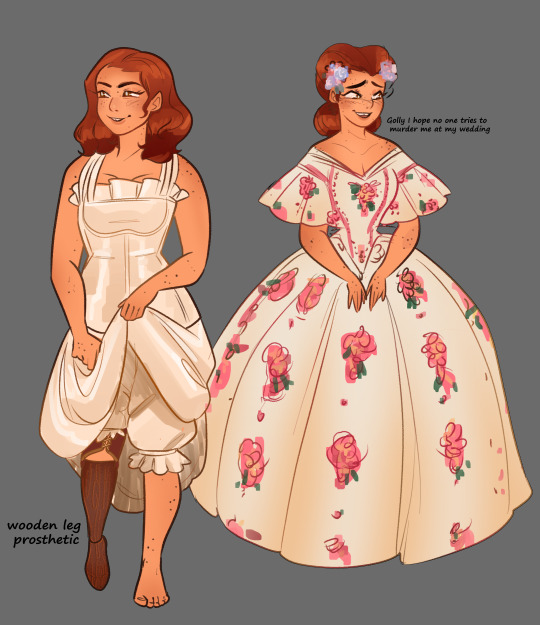
"The Ballad Of Sarah Berry" but it's 1860 and it's about a suitress trying to attract a high-class man, and marry him to boost her family's status.
failing to do so she goes on a murder spree at the wedding.
My interpretation of Sarah Berry(Blonde) and Julie Jenkins(Brunette)
I wanted to make an animatic but I just don't have the time SIGH
#MyArt#My Art#oc#animatic#ballad of sara berry#doodle#character design#1860#1860s#ball gowns#pathesis#vintage murder haha#musical#a musical exhibition
94 notes
·
View notes
Text
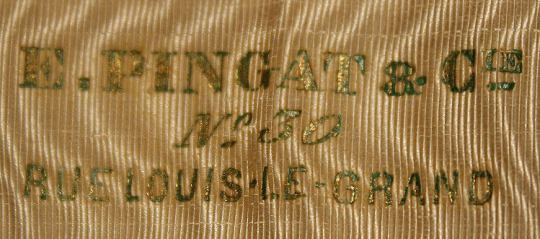

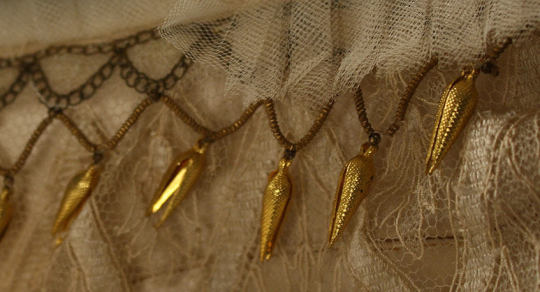
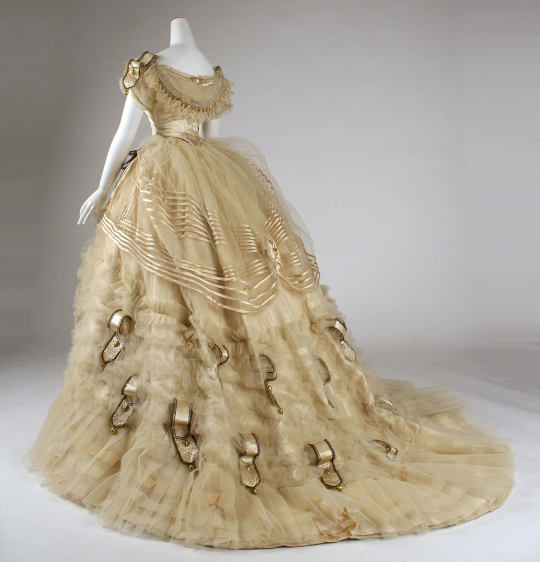
Ball Gown
Emile Pingat (Paris, France)
c.1864
The MET (Accession Number: C.I.69.33.1a, b)
#ball gown#evening dress#1860s#fashion history#historical fashion#up close#pingat#emile pingat#france#silk#second french empire#19th century#crinoline era#1864#the met#playing a bit with my layouts
413 notes
·
View notes
Text

2 notes
·
View notes
Text

#historical fashion#fashion#historical#history#historical clothing#historical dress#long dress#victorian#textiles#victorian era#1860s fashion#1860s dress#1860s art#1800s fashion#1800s dress#19th century fashion#19th century#dress#dresses#ball gown#gown#textile#victorian history#bee#victorian fashion#old fashioned#fashionable#high fashion#victorian clothing#clothing
66 notes
·
View notes